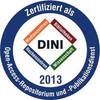Preview |
PDF, English
Download (163MB) | Terms of use |
Abstract
At LHC energies, charmed-baryons are copiously produced. The recent upgrade of the ALICE experiment for Run 3 improved the vertexing capabilities and allows to operate at an increased interaction rate and in continuous readout mode, thus allowing for collecting a significantly larger dataset compared to Run 2. This opens a new dimension of precise charmed-baryon measurements in several decay channels, helping to shed light on the mechanisms responsible for the production and decay of these particles. This topic became of crucial interest after recent studies by ALICE challenged the assumption of the universality of charm hadronisation processes across different collision systems. Moreover, the decay of charmed-baryons is still poorly understood and measurements of corresponding branching ratios pose a challenge to all models. This thesis presents the measurement of the prompt cross section of the $\Xi_c^0$ baryon using a dataset collected by the ALICE experiment. The weak decay $\Xi_c^0\rightarrow\Xi^-\:\pi^+\:+\:{\mathrm{c.c.}}$ is reconstructed using minimum bias proton-proton collisions data corresponding to 0.8 $\mathrm{pb}^{-1}$ of integrated luminosity recorded at a centre-of-mass-energy of 13.6 TeV in 2022. The measurement is performed at midrapidity and in the transverse momentum interval $1<p_{\mathrm{T}}<12$ GeV/$c$. The Run 3 ALICE analysis framework has been optimized to process large-size datasets and a new strategy to produce realistic charm-enriched Monte Carlo has been developed and implemented. The simulation used in this analysis is anchored to the corresponding data taking conditions and constrained by real data in a data-driven mode. The analysis is validated with a closure test. However, a $\sim40\%$ $p_{\mathrm{T}}$-independent discrepancy is observed between the Run 3 measurement and the corresponding Run 2 result, pointing to unresolved issues in data reconstruction and/or Monte Carlo production. In Run 3, besides permanently storing a small fraction of minimum bias datasets, ALICE relies on the implementation of software triggers to investigate the huge amount of proton-proton collisions delivered by the LHC, while at the same time applying an efficient data storage procedure. This allows to investigate an integrated luminosity which is more than three orders of magnitude larger compared to Run 2. The ALICE software triggers have already processed an integrated luminosity of 82 $\mathrm{pb}^{-1}$, and an additional sample corresponding to more than 100 $\mathrm{pb}^{-1}$ is expected to be analysed by the end of Run 3. Within this work, a dedicated trigger has been developed and applied to proton-proton data collected in 2023 and 2024 to reconstruct Cabibbo-suppressed $\Omega_c^0$ decays. This software trigger is dedicated to the reconstruction of the singly-suppressed mode $\Omega_c^0\rightarrow\Xi^{-}\:\pi^{+}\:+\:\mathrm{c.c.}$ and of the doubly-suppressed decay $\Omega_c^0\rightarrow\Xi^{-}\:\mathrm{K}^{+}\:+\:\mathrm{c.c.}$ and it will allow for relative branching fraction measurements in the coming years.
| Document type: | Dissertation |
|---|---|
| Supervisor: | Schweda, Dr. Kai |
| Place of Publication: | Heidelberg |
| Date of thesis defense: | 3 July 2025 |
| Date Deposited: | 18 Aug 2025 09:33 |
| Date: | 2025 |
| Faculties / Institutes: | The Faculty of Physics and Astronomy > Institute of Physics |
| DDC-classification: | 530 Physics |
| Uncontrolled Keywords: | Particle physics, heavy-flavour |









